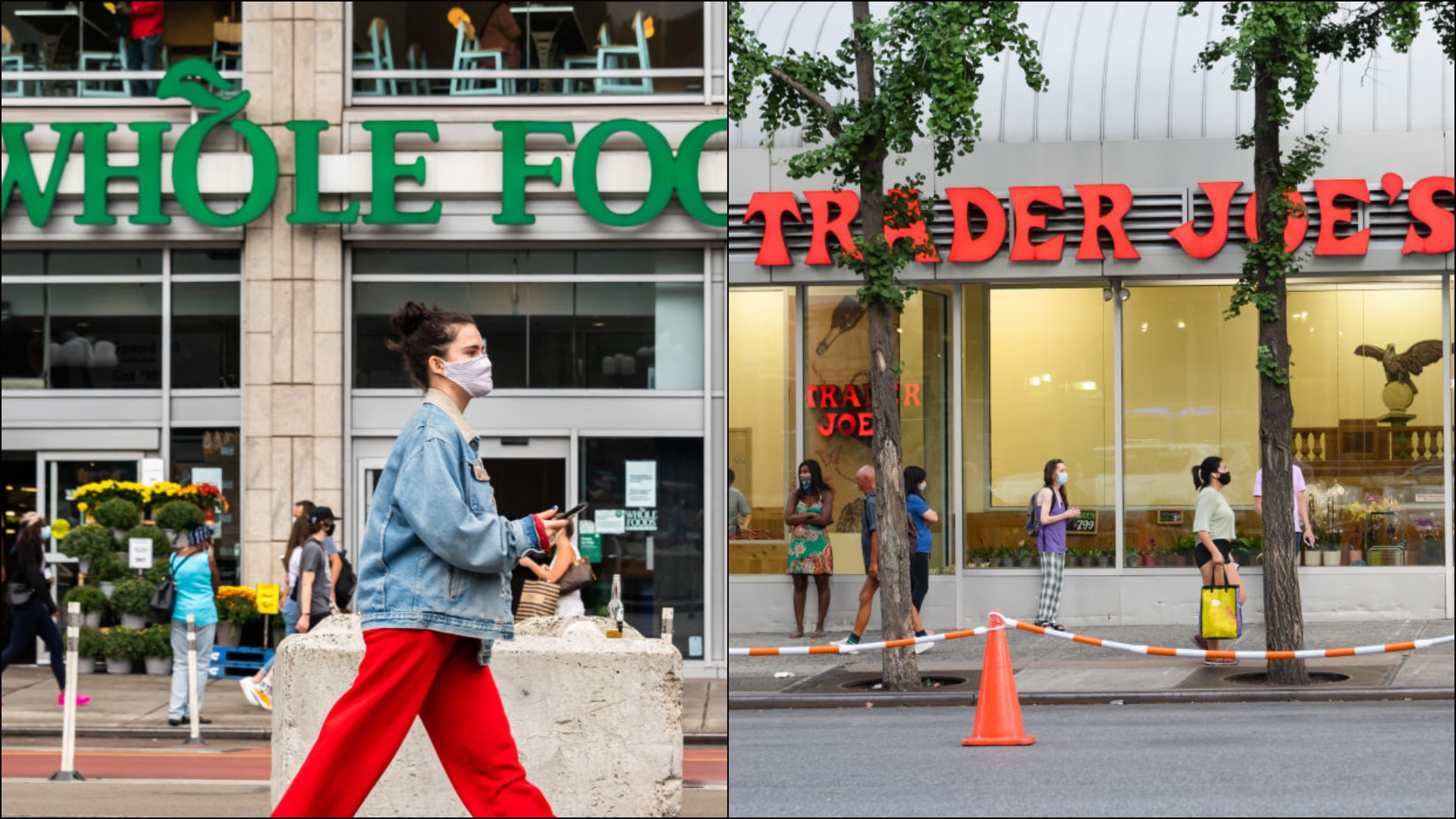How Did Trader Joe's Weather The Pandemic Better Than Whole Foods?
When it comes to grocery shopping, there are Trader Joe's people, Whole Foods people, and people who are happy to support their local chain or mom and pop and don't need any of that fancy stuff, thankyouverymuch.
Placer.ai did a deep dive into pandemic-era grocery shopping and found that local and regional chains saw the smallest drop in business. Kroger, Meijer, and Albertson's actually saw an increase in year-over-year sales for March through September. The two chains that suffered most were Trader Joe's and Whole Foods who, during that six-month period, saw a 16.4% and 33.2% drop, respectively.
But when Placer.ai analysts separated the data out by months, they noticed something interesting: While both chains saw a nearly 60% drop in year-over-year business in April, Trader Joe's managed to recover over the summer, and by September, its decrease in business was about the same as the regional chains'. Whole Foods, however, continued to lag: its September 2020 sales were about 25% less than September 2019.
Why is that? The researchers ventured a guess: "Trader Joe's was much more successful at adapting to the mission-driven shopping pattern that has accelerated across the country during the pandemic." Customers spent more time in the store than they did the year before, and they bought more groceries. They were also more willing to travel longer distances to complete their shopping mission because they still love Joe's and they can't live without [insert your favorite Trader Joe's specialty item here]. Whole Foods shoppers, by contrast, are more likely to say screw it and buy their groceries at a store more convenient to home.
I'd like to offer a bit of anecdotal evidence as well. When I went on my Trader Joe's missions during the pandemic, I had to wait in long lines outside the store. In the summer, there were canvas canopies to stand under and the ever-friendly TJ's employees came by with complimentary bottles of water. The number of customers inside the store was severely limited. Instead of the usual traffic jams, I could move freely up and down the aisles. I thought that I was buying more than I usually did because it was a Mission and I didn't know when I would be back, but could it have been because shopping was so much more pleasant?
By contrast, my local Whole Foods is now filled with Amazon Prime Now and Instacart shoppers who bumble around with large carts, blocking the aisles and creating all sorts of chaos. (This is not just my observation: Business Insider published an extensive report about how Prime Now shoppers have been "clogging aisles, ignoring virus protocols, and exacerbating severe understaffing.") The last time I shopped there, during a weekday when it should have been quiet, it made me want to scream, and I swore to myself that as much as I love the Pine Manor chicken, I'd rather shop at my local grocery store or even wait in line at Trader Joe's.
